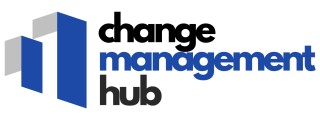
Understanding the Human Element
The Human Side of Change
In the realm of change management, understanding the human element is crucial. People are at the heart of any organizational transformation, and their reactions can significantly influence the success of change initiatives. Employees are not just cogs in a machine; they are individuals with emotions, concerns, and aspirations. Recognizing this is the first step in creating a supportive environment for change.
Effective change management requires a framework that prioritizes people. This involves clear communication, empathy, and active engagement. Employees need to feel valued and heard, especially during times of transition. By fostering a culture of openness, organizations can mitigate resistance and build trust among their teams.
Engaging Employees in the Change Process
Engagement is a key factor in successful change management. When employees are involved in the decision-making process, they are more likely to embrace change. This can be achieved through regular feedback sessions, workshops, and collaborative platforms where team members can share their insights and concerns.
Moreover, providing training and resources is essential to equip employees with the skills needed to adapt to new processes and technologies. This not only enhances their confidence but also ensures a smoother transition for the organization as a whole.
Building a Resilient Organizational Culture
A resilient organizational culture is one that can adapt to change without losing its core values. This involves creating a supportive environment where employees feel empowered to take risks and innovate. By aligning the organization's goals with the personal goals of its employees, a sense of shared purpose can be cultivated.
In conclusion, the human element is a critical component of the change management process. By focusing on people, organizations can create a strong foundation for successful transformation. For further insights on mastering change management, consider exploring essential reads for mastering change management.
Streamlining Processes for Change
Enhancing Effectiveness through Streamlined Workflows
In any organizational transformation, optimizing business processes plays a crucial role in ensuring a smooth transition. The success of change management efforts depends significantly on the ability to streamline tasks, reduce inefficiencies, and improve overall workflow. It's essential to focus on the human aspect of processes, understanding that employees are not merely cogs in a machine but integral participants in implementing change.
Streamlining processes requires a thorough examination of current operations. This involves identifying bottlenecks, redundancies, and areas that demand improvement. A structured framework can be invaluable in these efforts. By utilizing data-driven strategies, organizations can make informed decisions that are more likely to yield desired outcomes.
The success of process optimization is closely linked to embracing the 'people process' concept. By putting employees at the center of the change process, organizations can enhance adaptability and responsiveness. It's important to integrate employee feedback and actively involve them in the decision-making process, fostering a culture of trust and collaboration.
One approach to streamlining is the application of continuous process improvement principles. This method encourages iterative enhancements rather than overhauls, allowing for gradual transformation that aligns with both organizational goals and employee capabilities. The integration of knowledge management and customer service insights helps refine process strategies, ensuring that changes not only benefit the organization but also enhance the customer experience.
Meanwhile, the role of technology cannot be overstated. Process technology tools such as workflow automation platforms and data analytics software can drastically improve the efficiency of processes. These tools enable organizations to monitor and optimize their operations in real time, ensuring that any deviations from the expected course are swiftly addressed. By leveraging a technology framework crafted around business needs, companies can achieve a harmonious balance between technology and human input.
- Utilizing a ppt framework can offer an organized approach to tackling process challenges.
- Collaborative team efforts ensure that process updates resonate with those involved on every level.
- Effective change management encompasses both technology and a focus on people-centered processes.
Better processes lead to stronger organizational structures that are better suited for enduring changes. Moreover, by aligning process improvements closely with the objectives of the larger organizational framework, companies can safeguard their competitive edge and sustain their momentum in an ever-changing business landscape.
Leveraging Technology for Transformation
The Role of Technology in Enabling Change
In today's fast-paced business environment, the integration of technology is crucial in driving successful change management initiatives. Digital transformation offers organizations the ability to streamline complicated tasks, improve efficiency, and support people in adapting to evolving processes. When paired with a strategic framework, the deployment of technology in change management can significantly enhance organizational transformation. For companies undergoing change, a well-implemented technology framework allows for better data management and decision making. With the rise of data-driven solutions, organizations can tap into insights that guide precise strategic planning and execution. This approach empowers teams and employees to perform their roles more effectively by providing them with the tools needed to accomplish tasks efficiently. A successful transformation incorporates technology to support the ‘golden triangle’ of change management: people, process, and technology. This synergy ensures that as processes evolve, employees have the required support and resources to adapt.Balancing Technology with Human Needs
While technology serves as a pivotal pillar in modern change management, its effectiveness heavily relies on balancing with the human element. Organizations must consider the people aspect when deploying new technologies to ensure that employees feel supported and engaged in the new processes. Technology should simplify processes, not complicate them. Leading organizations focus on creating technology solutions that are user-friendly and serve clear purposes that align with organizational goals. Employees should be well-prepared and educated on new systems to minimize disruption and resistance. This stage process highlights the importance of ongoing training and development. Technology also enhances communication within the organization, fostering a culture where knowledge management is prioritized. This supports smoother change by making sure that employee, customer service teams, and management are on the same page with the new technology and processes. In conclusion, leveraging technology in change management requires a careful balance with people and process. When done correctly, technology not only facilitates change but also paves the way for sustainable organizational growth.Balancing the Triad: People, Process, and Technology
Orchestrating Harmony Between People, Process, and Technology
In the realm of change management, the golden triangle of people, process, and technology serves as a quintessential framework. Each component bears its own significance; however, their true power lies in their collaboration. To successfully navigate this triad, organizations must adopt a holistic approach that balances each element effectively.
Firstly, the role of people in this equation cannot be overstated. Employees are the cornerstone of organizational transformation, and their commitment is essential for success. Communicating openly with every team member and fostering an environment of knowledge management can help ensure that people remain engaged throughout the change. Encouraging participatory decision-making processes safeguards employee involvement, moving towards a people-centric transformation.
Secondly, focusing on processes is crucial for the smooth execution of tasks within an organization. Streamlining business processes and utilizing data-driven strategies can significantly improve efficiency and adaptability in a rapidly changing business landscape. Establishing an effective change management framework is not just about process refinement but also about embedding flexibility to accommodate evolving needs.
Finally, technology acts as the enabler that can propel organizations forward. Embracing digital transformation through a robust technology framework can elevate individual and organizational capabilities. Efforts should be made to carefully select technology solutions that align with the unique demands of the organization rather than opting for a one-size-fits-all approach. A well-integrated technology ppt can lead to enhanced operational efficiency and transformative growth.
Striking a balance between these three facets requires cultivating an understanding of how they interact. Leaders should not view people, process, and technology as standalone pillars; instead, they should recognize their interconnectedness and synergize them to drive favorable outcomes. Adopting best practices in this context provides a foundation for sustainable change.
Case Studies: Success and Lessons Learned
Illustrations of Successful Transformations
Navigating change is an intricate affair within any organization, requiring a perfect balance of people, process, and technology. To better grasp this interplay, we will dissect some case studies that highlight success and impart valuable lessons.
In one organizational transformation, a major tech company focused heavily on data-driven decision making. By scrutinizing customer service metrics, they redefined their processes, allowing their teams to streamline tasks through effective use of technology frameworks. By aligning with the golden triangle, they interwove people's expertise, a robust process framework, and technology advancements, leading to a formidable increase in employee satisfaction and productivity.
Another case involves a multinational corporation embracing digital transformation. They adopted a three-stage process to overhaul their operations. Initially, they emphasized enhancing employee experience—ensuring each member was comfortable with the proposed changes. Next, they leveraged a state-of-the-art process technology to automate tasks and improve efficiency. Finally, technology ppt sessions were conducted to solidify understanding and implementation across all levels of the organization.
Lessons learned underscore the importance of fostering a robust ppt framework for seamless change management. This includes prioritizing open communication, ongoing training, and fostering an environment of continuous improvement and knowledge management. These are cornerstone strategies for ensuring that employees not only adapt to change but thrive within it.
Furthermore, the alignment of the people process, process technology, and people technology systems highlights the necessity of a holistic approach to change. Organizations that excel in this respect demonstrate how strategic alignment of the three components supports both business objectives and a resilient organizational culture.













